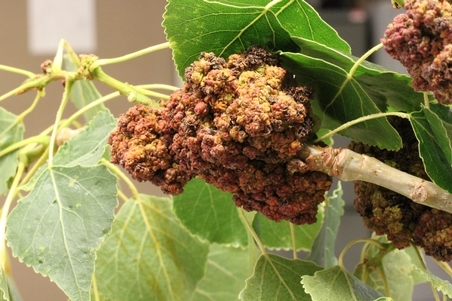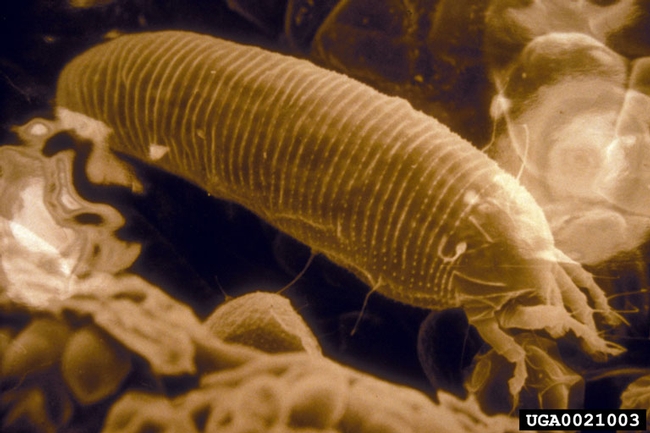We have a lot of trees in our area related to poplars: aspens and cottonwoods are two common examples. Most species in this genus (Populus) are subject to infestations of the poplar bud gall mite. I've seen a couple samples each summer in our area.
The gall mite causes strange growths called galls mostly on buds of last year's growth. Cottonwoods and poplars seem to get it often, but some species and cultivars are resistant. It's not usually fatal. In some cases the infestations are bad enough to cause real problems and branch dieback.
This is what it looks like:
The pest in this case is an eriophyid mite. For the curious, pictured below is the bindweed gall mite. It's a relative that looks about the same. Honestly, it doesn't matter what the pest looks like because you would need a powerful microscope to see them. They're very tiny! (Much smaller than spider mites.)
Heavy infestations can kill branch tips and set a tree up for future problems. Small infections are largely harmless. It's been my observation that most galls occur on the lower portion of the tree.
If you check out the UC IPM website, it just throws its hands the air unhelpfully and says don't worry about eriophyid mites. It's right. There really isn't a lot a homeowner can do about it. For this pest, pruning off the galls often helps the next year if you get them all—and there aren't too many.
Spraying doesn't often work. Although it would make you feel like you were doing something, I would probably try to talk you out of it.
Utah State Extension has some information about this pest if you want to learn more.

